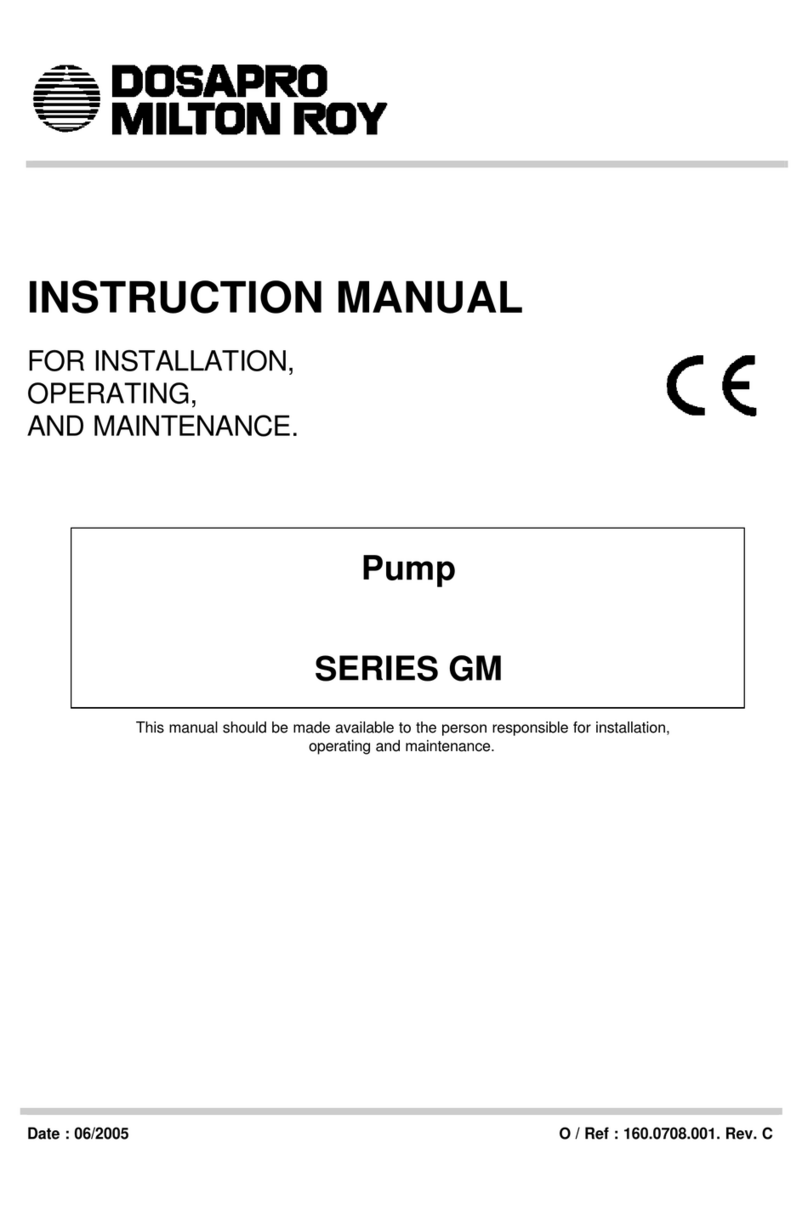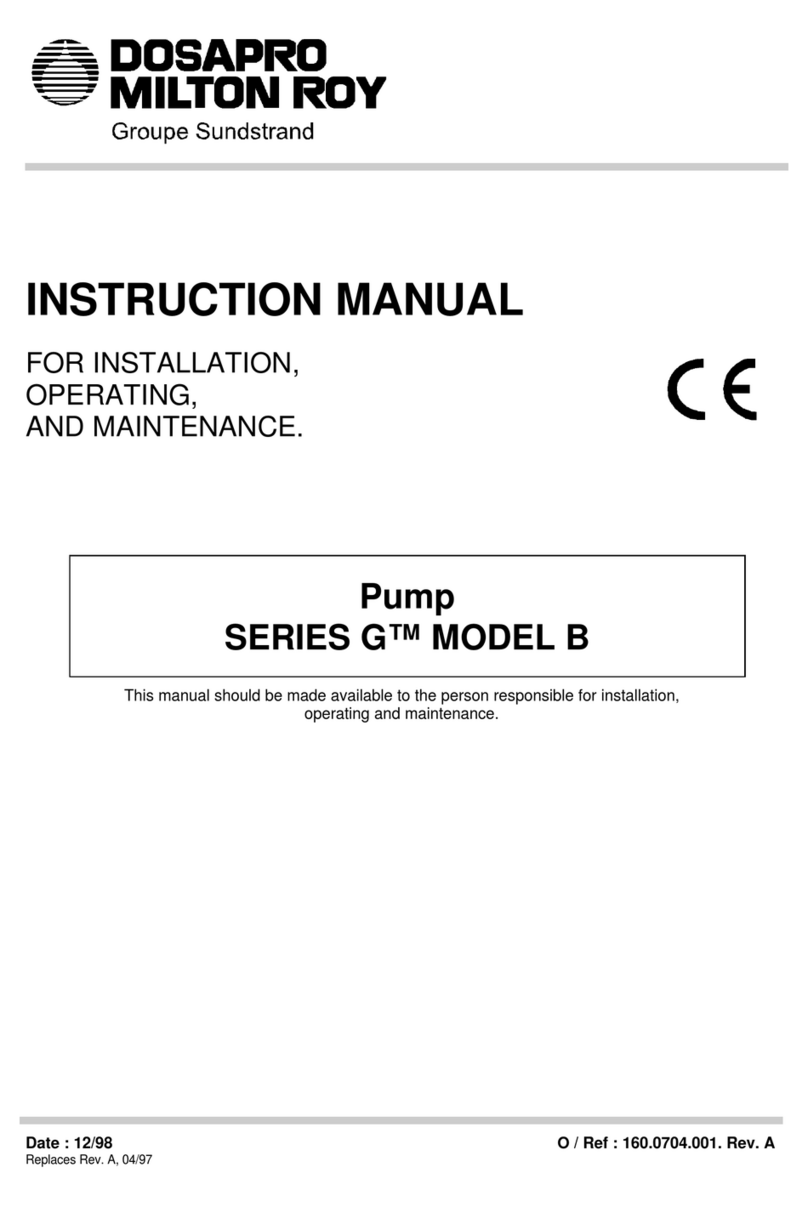
II - 1
PART II - INSTALLATION
II - 1. HYDRAULIC INSTALLATION
All the information concerning the hydraulic installation
of a metering pump is detailed in a volume,
«Generalities about metering pumps installation». You
should consult that manual to determine the installation
required for your application.
Certain essential points are, however, also briefly
covered in this document.
GENERAL
•Piping layout
There must be no swan-necks or stagnant volumes
which are liable to trap air or gas.
Stresses due to incorrect alignment of piping with
respect to the centreline of valves must be avoided as
far as possible.
•Remove burrs and clean the piping before fitting.
•It is advisable to provide for a calibrating chamber in
order to calibrate the pump in service conditions.
PIPING ON THE SUCTION CIRCUIT
•If your pump is flooded, a shutt-off valve will be
required
•If your pump is not flooded (suction lift), install the
foot valve equiped with the filter upstream of the
above-mentioned item
•For viscous products: consult us.
•Check whether the diameter and length of pipe are
compatible with the pump's maximum capacity.
•Install the pump as near as possible to the suction
tank.
PIPING ON THE DISCHARGE CIRCUIT
•Provide for a safety valve on the discharge pipe,
designed to protect the installation.
•It is advisable to install a priming valve on the
discharge circuit in order to make starting and
maintenance of the pump easier.
Note: The priming valve and the safety valve have no
purpose if your pump is equipped with a 4-function
valve.
Typical installations are shown schematically in Figure
2.1a.
II - 2. DRIP COLLECTION
Provide for outlets so that any leak or drips can be
easily drained off without any danger. This is especially
important in the case of harmful liquids.
See Figure 1.2a.
Position a tray under the plain hole (detection port [9])
located at the bottom of the liquid end mounting
assembly to collect leaks in the event of rupture of the
diaphragm or boot.
Connect the 4-function valve [10] to the top
of the reservoir (see the specific
documentation), ensuring that tube is not
submerged.
II - 3. HANDLING
The « SERIES G » Model A pump requires no special
precautions owing to its light weight.
Proceed with mounting as soon as it is set up on site
(see Chapter II - 4. Setting up).
II - 4. SETTING UP
Secure the pump to a horizontal support (see attaching
holes). Leave enough clear space around the pump to
be able to carry out servicing operations and
adjustments.
Pumps installed outdoors must be protected by a
shelter (according to the climatic conditions).
4FV





























